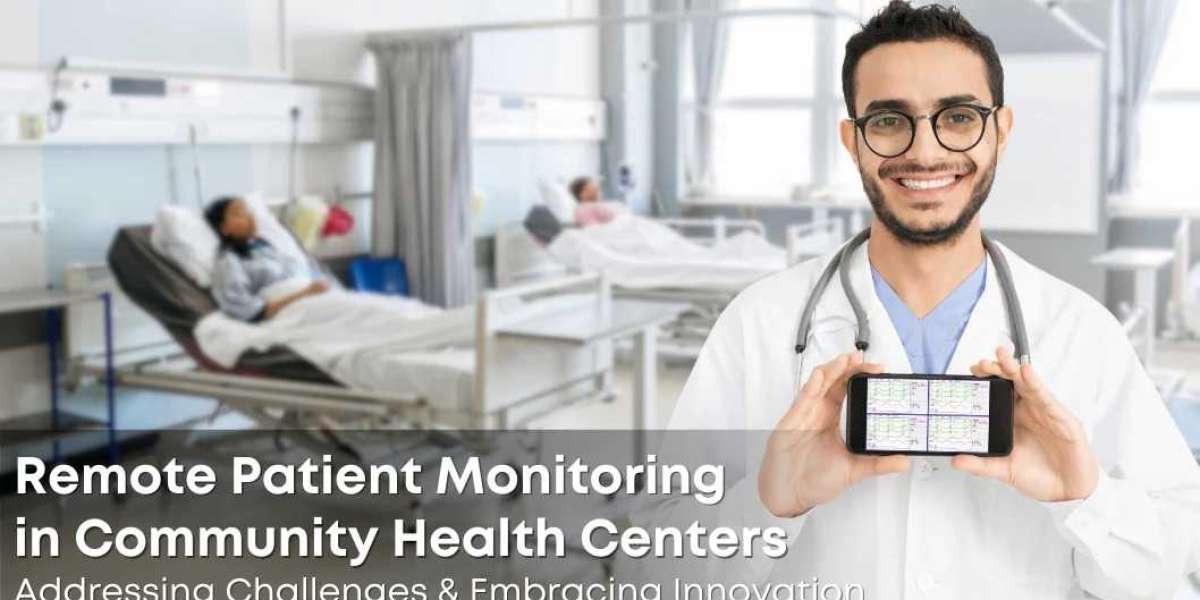Community Health Centers (CHCs) play a vital role in providing accessible healthcare services to underserved populations. As healthcare systems evolve, the integration of technology becomes essential. Remote Patient Monitoring (RPM) emerges as a groundbreaking innovation, offering promising solutions to many challenges faced by CHCs. This blog explores the significance of RPM in CHCs, the challenges these centers face, and the potential impact of RPM on global healthcare.
What are Community Health Centers (CHCs)?
Community Health Centers are local, non-profit healthcare providers that offer comprehensive services regardless of patients' ability to pay. These centers primarily serve low-income and rural populations, providing essential services such as primary care, dental care, mental health services, and more. CHCs are fundamental in reducing healthcare disparities, improving community health outcomes, and ensuring that all individuals have access to quality care.
Challenges Faced by Community Health Centers:
Despite their importance, CHCs encounter numerous challenges, including:
1.Limited Resources: Many CHCs operate with constrained financial and human resources, making it difficult to meet growing patient demands.
- High Patient Volumes: Serving underserved communities often results in high patient volumes, leading to long wait times and overworked staff.
- Chronic Disease Management: A significant portion of CHC patients suffer from chronic diseases, requiring ongoing monitoring and management, which can strain limited resources.
- Technology Adoption: Limited funding and infrastructure can hinder the adoption of advanced healthcare technologies.
Remote Patient Monitoring Technology: A Powerful Solution for CHCs
Remote Patient Monitoring (RPM) technology offers a transformative solution for CHCs. RPM involves using digital devices to monitor patients' health metrics from a distance, providing real-time data to healthcare providers. This technology enables continuous patient monitoring, timely interventions, and improved chronic disease management.
Key benefits of RPM for CHCs include:
- Enhanced Patient Care: RPM allows for continuous monitoring, leading to early detection of health issues and timely interventions.
- Resource Optimization: By reducing the need for frequent in-person visits, RPM helps optimize resources and reduces the burden on healthcare staff.
- Improved Patient Engagement: RPM empowers patients to take an active role in managing their health, improving adherence to treatment plans.
- Data-Driven Decisions: Real-time data from RPM devices facilitates informed decision-making, leading to better health outcomes.
How Promising is RPM in Global Healthcare?
RPM technology is not only beneficial for CHCs but also holds immense potential in the global healthcare landscape. The adoption of RPM can significantly improve healthcare accessibility, quality, and efficiency worldwide. In countries like India, where healthcare disparities are prevalent, RPM can enhance the reach and effectiveness of medical services. Furthermore, the integration of RPM in global healthcare systems aligns with the growing trend of medical value travel in India, where patients seek high-quality, cost-effective healthcare solutions.
Clarity Medical's Remote Patient Monitoring Solution:
Clarity Medical offers an innovative RPM solution designed to address the unique needs of CHCs. Their RPM technology includes user-friendly devices and a comprehensive platform for real-time data analysis and patient management. Key features of Clarity Medical's RPM solution include:
- User-Friendly Devices: Easy-to-use monitoring devices ensure seamless patient adoption and accurate data collection.
- Real-Time Data Analysis: Advanced analytics provide healthcare providers with actionable insights for proactive patient care.
- Integration with EHRs: Seamless integration with electronic health records (EHRs) ensures a holistic view of patient health.
- Customizable Alerts: Personalized alerts enable timely interventions, reducing the risk of complications.
Conclusion
Remote Patient Monitoring technology represents a powerful tool for enhancing the efficiency and effectiveness of Community Health Centers. By addressing key challenges and embracing innovative solutions like Clarity Medical's RPM, CHCs can improve patient care, optimize resources, and contribute to better health outcomes. As the global healthcare landscape evolves, the integration of RPM technology will play a crucial role in advancing medical value travel in India and beyond, ensuring that quality healthcare is accessible to all.
By leveraging RPM, CHCs can continue to fulfill their mission of providing equitable healthcare services, ultimately leading to healthier communities and a more resilient healthcare system.








